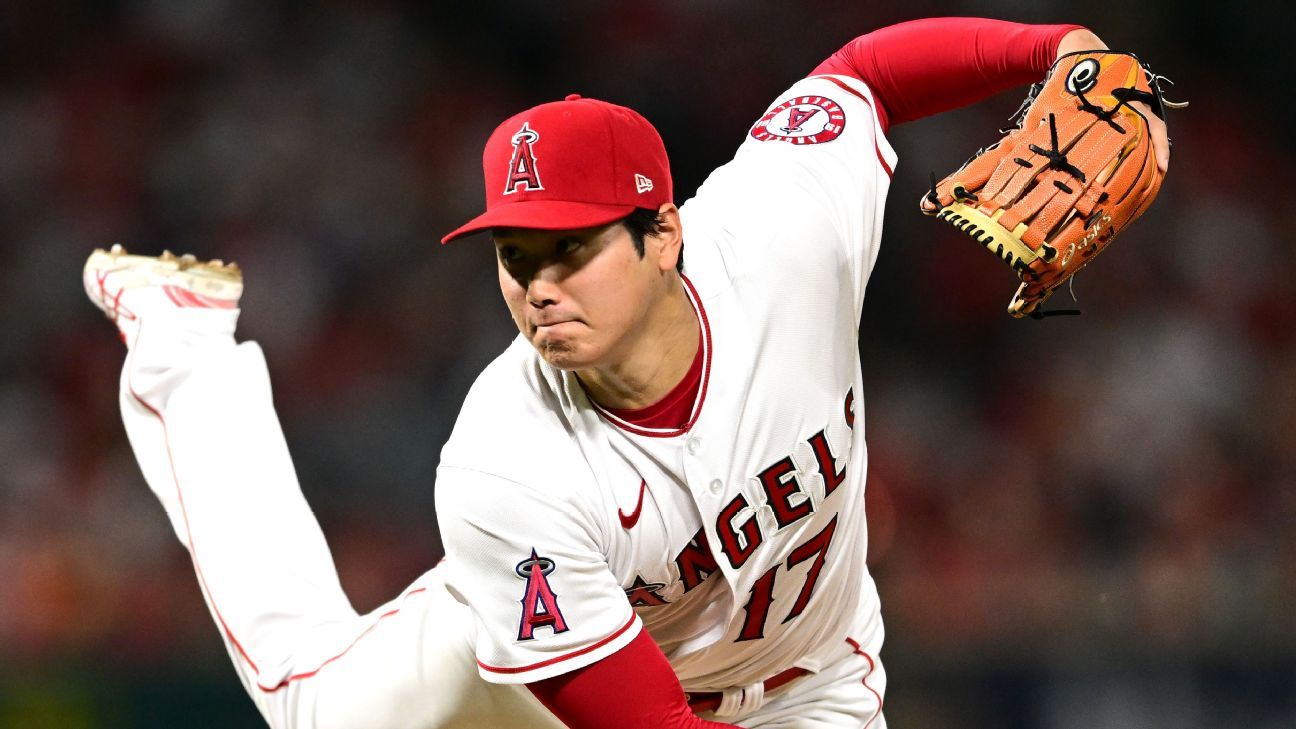ANAHEIM, Calif. — The second pitch Shohei Ohtani threw on Opening Day was a 98 mph fastball spotted on the very edge of the inside corner to Jose Altuve. By the end of the first inning Thursday night, the Los Angeles Angels‘ two-way sensation threw seven pitches at a higher velocity. Oftentimes in 2021, while feeling for command after a half-decade without consistent pitching, Ohtani eased into those higher velocities, saving the bigger numbers for tighter situations late in games.
Trusting it early shows just how much has changed for him on the mound in one year.
“He’s just gradually gotten better command of his fastball — that’s what I think the big difference is,” Angels manager Joe Maddon said after his team’s season-opening 3-1 loss to the Houston Astros. “And you saw it again tonight — a lot of 97s and 99s. In the past, the early part of the game would be lower numbers until he needed it. Right now, even when it’s not needed, he’s still doing those things.”
Ohtani — limited, like all Angels starters, to the 80-pitch range because of the shortened spring training — allowed one run on four hits in 4⅔ innings against one of the most dangerous lineups in the league, with one walk and nine strikeouts. Three of those strikeouts came against Altuve, who had struck out three times in a game only three times through 11 previous major league seasons.
Despite the abbreviated pitch count, Ohtani threw seven 99 mph pitches, third-most in his career. The average velocity on his four-seam fastball, which seemed to display a little more cutting action, was 97.8 mph, more than two ticks higher than last year’s average. The effect of that pitch noticeably played up his slider, which induced seven whiffs on nine swings.
Ohtani, coming off unanimous selection as the American League’s Most Valuable Player, began spring training talking about how much stronger he felt.
Perhaps it’s showing up in a fastball that can consistently approach triple digits.
“That’s what I’m hoping for,” Ohtani said through his interpreter. “It’s going to be a long season, so I don’t know how the fatigue’s going to play into it, but I’m going to try to pick my spots and throw hard.”
A sold-out crowd of 44,723 crammed into Angel Stadium to watch Ohtani begin to follow up on arguably the most impressive season in baseball history, when he coupled a .965 OPS with 46 home runs and 26 stolen bases as a hitter with a 3.18 ERA and 156 strikeouts in 130⅓ innings as a pitcher. By taking the ball in the top of the first and leading off in the bottom half of the inning, Ohtani became the first player in history to both throw and face the first pitch of his team’s season.
The Angels’ offense struggled against Astros lefty Framber Valdez, who twirled 6⅔ scoreless innings and at one point retired 15 straight batters. But they finally broke through with two outs in the eighth, when David Fletcher‘s sinking line drive scurried past a diving Yordan Alvarez in left field, scoring Brandon Marsh and bringing the tying run to the plate. Up came Ohtani, who launched a 98 mph fly ball that initially stirred the audience but was ultimately caught at the edge of the outfield grass.
“I thought it might have a chance to leave,” Ohtani said after an 0-for-4 night offensively. “I just got a little under it.”
Ohtani was removed as a pitcher with one on and two outs in the fifth partly because Maddon wanted to use lefty reliever Aaron Loup to attack the left-handed-hitting Michael Brantley. Upon returning to the dugout, Maddon approached Ohtani to ask if he wanted to remain in the game and take advantage of a new rule that allows him to keep hitting even after he’s done pitching.
Ohtani’s response: “Of course.”
By the end of the night, Ohtani said, he had almost forgotten he had pitched. He treated the last third of the game as if he were the designated hitter — and he very nearly tied the score while doing so.
“Nothing’s too quick for him,” Maddon said. “Nothing’s too big for him.”
